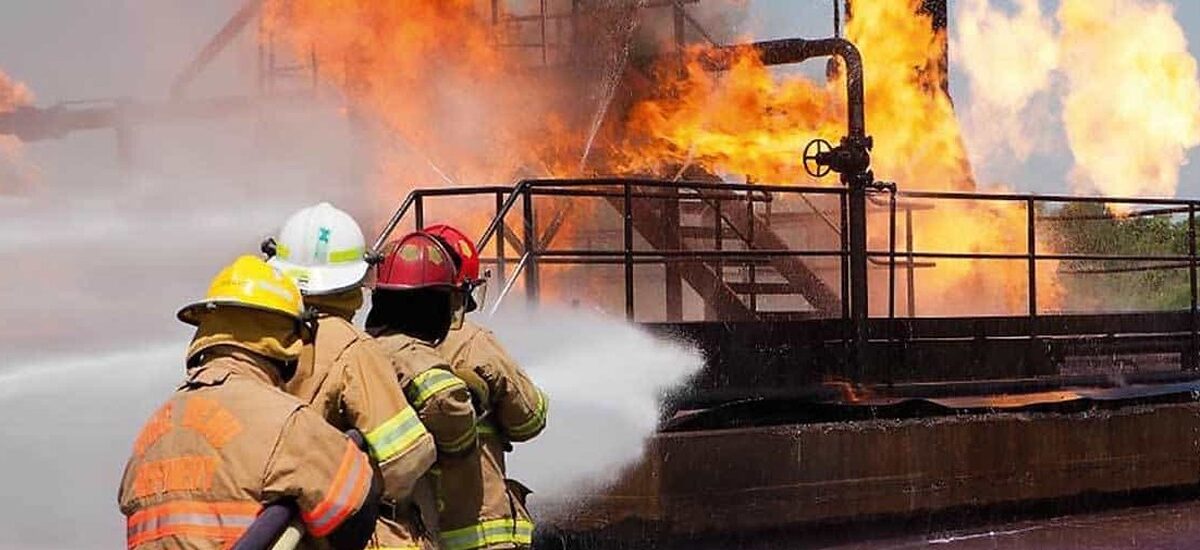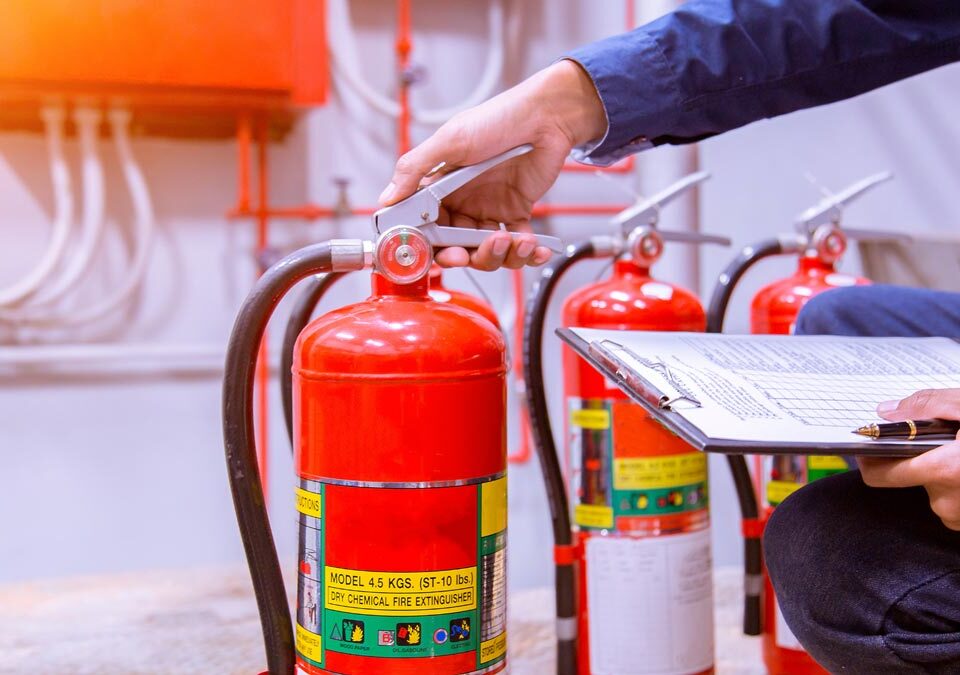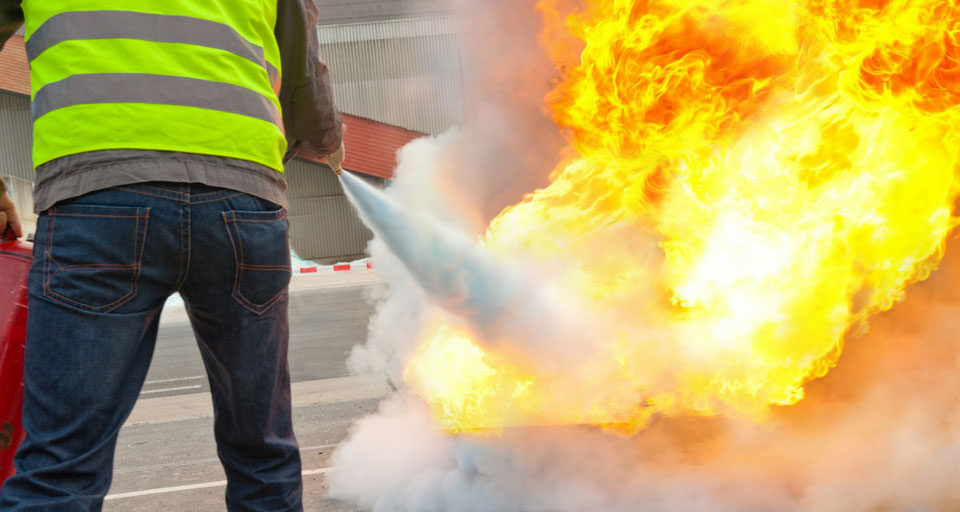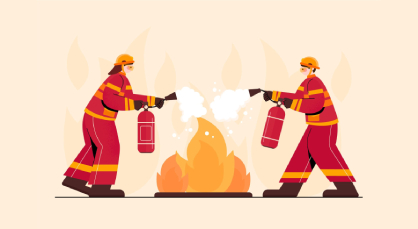Demystifying Fire Explosions: A Comprehensive Look at Flammable Gases and Their Properties

A Comprehensive Guide to Process Hazard Analysis
June 2, 2023
The Importance of Arc Flash Studies in Industrial Settings
June 2, 2023Demystifying Explosions: A Comprehensive Look at Flammable Gases and Their Properties
In this article, we will delve deep into the science behind explosions, specifically flammable gases and their properties. As a comprehensive guide, we’ll cover everything from the causes of explosions, to the types of gases and how they ignite. But we won’t stop there. With expert analysis, we’ll demystify the misconceptions surrounding flammable gases and provide a clear understanding of how to prevent potential hazards. By the end of this article, you’ll have a comprehensive understanding of gas explosions and the knowledge to keep yourself and others safe. Let’s get started.
Introduction
Explosions are one of the most destructive and dangerous events that can occur in various industries. These sudden, violent releases of energy can cause severe damage to property and life. Flammable gases are one of the primary culprits behind explosions, making it essential to understand their properties and behavior to prevent catastrophic events.In this comprehensive article, we will delve deep into the world of flammable gases and explore the science behind explosions. We will discuss the causes and physics behind these events, common types of explosions, hazardous flammable gases, safety measures, prevention methods and emergency response procedures. By the end of this article, you will have a better understanding of explosive events and how to ensure maximum safety in high-risk environments
Understanding Flammable Gases
Understanding Flammable Gases:Flammable gases are substances that have a high potential for combustion or explosion when they come into contact with an ignition source. These gases are commonly used in various industrial processes, transportation, and fueling of engines. Examples of flammable gases include hydrogen, methane, propane, butane, and natural gas.
It is important to understand the properties of flammable gases to ensure safety in handling and use. Flammable gases have low ignition points and can ignite easily from a small spark or heat source. They also have narrow ranges between their lower explosive limit (LEL) and upper explosive limit (UEL), meaning that they can quickly reach dangerous levels if there is a leak or buildup in an enclosed space.
By being aware of the nature of flammable gases and taking necessary precautions such as proper ventilation, regular equipment maintenance, personal protective equipment (PPE), and avoiding potential sources of ignition like smoking or electrical sparks, we can help prevent accidents caused by explosions related to these substances.
What Causes Explosions?
What Causes Explosions?Explosions are one of the most catastrophic events that can occur in any industry. They can be caused by many factors, such as chemical reactions, electrical sparks, and even mechanical failures. However, all explosions share a common characteristic: an uncontrolled release of energy that causes a sudden increase in pressure and temperature.
One common cause of explosions is the ignition of flammable gases or vapors. When these gases come into contact with an ignition source, such as an open flame or spark, they can ignite and rapidly burn. The resulting explosion can cause significant damage to buildings, equipment, and people.
Another factor that can contribute to explosions is the buildup of pressure within a confined space. This can occur when gases or vapors are unintentionally trapped in a closed container or piping system. As the pressure builds up, it becomes more difficult to contain the gas or vapor and prevent it from igniting.
To prevent explosions from occurring, it is essential to identify potential hazards and implement appropriate safety measures. Regular maintenance inspections should be conducted on equipment and storage containers to ensure they are functioning properly and not experiencing undue wear or damage that could lead to a dangerous situation.
By understanding what causes explosions and taking proactive steps to prevent them from occurring, industries can reduce their risk of catastrophic events while ensuring the safety of their workers and facilities.
The Physics Behind Explosions
The Physics Behind Explosions: Explosions may seem like sudden and chaotic events, but they are actually governed by the laws of physics. In order for an explosion to occur, three things must be present: fuel, oxygen, and a source of ignition. The fuel can be any material that is capable of burning or exploding, such as gasoline or natural gas. Oxygen is required to sustain the combustion process, while an ignition source provides the energy needed to start the reaction.
Once these ingredients are present in the right proportions, a chain reaction occurs that releases a large amount of energy in a very short period of time. This energy takes the form of heat and pressure waves that expand outward from the initial point of detonation. The speed at which these waves propagate depends on several factors, including the size and type of explosive material used.
The study of explosions falls under the field of blast engineering, which seeks to understand how buildings and other structures behave when subjected to sudden bursts of energy. By applying principles from physics and other disciplines, blast engineers can design structures that are better able to withstand explosions and protect their occupants from harm. Ultimately, understanding the physics behind explosions is key to preventing them from occurring in the first place and minimizing their impact when they do happen.
When it comes to explosions, there are several different types that can occur depending on the circumstances. One type of explosion is a mechanical explosion, caused by the sudden release of built-up pressure or tension. Another type is a chemical explosion, which occurs when two or more chemicals react violently with each other.Thermal explosions are yet another type of explosion caused by heat buildup. For example, when flammable gases are exposed to high temperatures, they can become unstable and ignite on their own. And lastly, nuclear explosions result from the release of energy from an atom’s nucleus.
Understanding these different types of explosions and their causes is crucial for preventing them from occurring in the first place. By taking proper precautions and safety measures, we can drastically reduce the likelihood of experiencing a catastrophic event. It’s important to remember that while some explosions may be unavoidable due to unforeseen circumstances, many can be prevented through careful planning and responsible actions.
Common Flammable Gases and Their Hazards
Common Flammable Gases and Their Hazards:Flammable gases are a major cause of explosions in many industries. Their properties and characteristics have been studied extensively to prevent their accidental ignition, but the risks associated with them remain high. Some of the most common flammable gases include hydrogen, methane, propane, acetylene, and butane.
Hydrogen is widely used in the chemical industry, fuel cells technology and as a coolant. It is highly flammable and may ignite even at low concentrations when mixed with air. Methane is a natural gas that is used for heating purposes. It can accumulate in closed spaces such as mines or basements, leading to deadly explosions. Propane is commonly used as fuel for cooking and heating appliances. Leakage of propane gas can cause an explosion if it comes into contact with an ignition source.
Acetylene is widely used in welding applications due to its high flame temperature. However, it can spontaneously ignite if it comes into contact with copper or silver materials causing a violent explosion. Butane is commonly used as a fuel for lighters and camping stoves due to its high energy content but it poses significant safety risks if mishandled.
It’s critical to understand these gases’ properties and hazards so that appropriate measures can be taken to ensure their safe handling while minimizing the risk of accidents or explosions at work sites or homes where they are stored or utilized regularly.
Precautions and Safety Measures
Precautions and Safety Measures:When dealing with flammable gases, it’s essential to take precautions that can reduce the risk of explosions. One of the first things to consider is proper ventilation and adequate airflow. A well-ventilated workspace can help prevent the accumulation of flammable gases, reducing the likelihood of explosions.
Another safety measure is to store volatile chemicals in appropriate containers and away from sources of heat or fire. Flammable gas cylinders should be securely stored in a vertical position with their valve protection caps in place to avoid accidental leaks.
It’s also crucial to conduct regular safety checks on equipment used in handling flammable gases, such as burners or heaters. Furthermore, training employees on safe handling practices and providing them with protective clothing and equipment like fire extinguishers can go a long way in preventing accidents. Taking these precautions ensures a safer work environment, reduces accidents, injuries, and ultimately saves lives.
Emergency Response to Explosions
In the event of a gas explosion, the first few minutes are crucial for emergency response teams and survivors. The immediate priority is to evacuate people from the affected area as quickly and safely as possible. Emergency responders, such as firefighters and paramedics, are trained to respond quickly to gas explosions and have specialized equipment for handling hazardous materials.After evacuating people from the affected area, it is important to assess the situation and determine whether there are any injured individuals that require immediate medical attention. Depending on the severity of the explosion, there may be many casualties that need to be transported to nearby hospitals for treatment. It is crucial that emergency responders work together efficiently in implementing their emergency response plan.
Once medical attention has been provided to those in need, it is time for investigators to begin their work in determining what caused the explosion and how it can be prevented in future. Investigators may include representatives from local government agencies, insurance companies, or engineering firms who will analyze various factors such as a possible gas leak or inadequate safety measures. By identifying the root cause of an explosion early on, preventative measures can be taken swiftly to mitigate future risk.
Methods of Prevention
To prevent explosions, it is crucial to take preventative measures that can reduce the risk of explosions occurring in the first place. One effective method is to implement a gas detection system that can detect any leakage or buildup of flammable gases before they reach explosive concentrations. These systems are highly sensitive and can provide an early warning signal, allowing for timely evacuation and response.Another method of prevention is to regularly inspect and maintain all equipment and machinery that handles potentially flammable gases. This includes checking for leaks, conducting regular maintenance, and replacing damaged components promptly. Additionally, it is necessary to train employees on proper safety procedures and protocols for handling hazardous materials.
Investing in explosion-resistant materials and construction practices can also significantly reduce the risk of explosions. The use of non-combustible materials such as steel or concrete in critical areas can help contain any explosion that may occur, minimizing damage and loss of life.
By implementing these preventive measures, companies can greatly reduce the likelihood of explosions occurring while ensuring employee safety at all times. Taking a proactive approach towards preventing explosions not only saves lives but also saves businesses from costly downtime, lost productivity, repairs or replacements costs which could be detrimental to their bottom line.
Industries at a High Risk of Explosions
Industries at a High Risk of Explosions:Many industries are at high risk of explosions due to the nature of their work. The Oil and Gas industry is one such industry where explosions can occur during drilling, refining, transportation, and storage. Chemical plants are also at risk as they deal with highly combustible materials that can explode if not handled properly.
Other industries with a high potential for explosions include the mining industry, where explosives are commonly used for excavation, and the food processing industry which deals with flammable gases such as ethanol in the production process. It is important for these industries to have strict safety protocols in place to prevent accidents from occurring.
Despite these risks, advances in technology have made it possible for these industries to operate safely and efficiently. With proper training, equipment maintenance, and adherence to safety guidelines, it is possible to prevent explosions from occurring in even the most hazardous workplaces. By remaining vigilant and taking proactive measures to mitigate risks, we can ensure that these vital industries continue to thrive while keeping workers safe.
Conclusion
In conclusion, it is imperative that we have a deep understanding of flammable gases and their properties to prevent explosions from occurring. We have explored the causes of explosions, the physics behind them, and different types of explosions. Additionally, we have discussed some common flammable gases and their hazards and outlined precautionary measures to minimize the risk of explosions in industries and workplaces. By following these guidelines and continually educating ourselves on this topic, we can ensure safer environments for ourselves and our communities.
At TSM TheSafetyMaster Private Limited we offer following services
TSM TheSafetyMaster® Private Limited
Unit No 221-451-452, SPL1/J, 2nd & 4th Floor, Sunsquare Plaza Complex, RIICO Chowk, Bhiwadi 301019, Rajasthan, India
Phone: +91 1493 22 0093
Mobile: +91 7665231743/9413882016
Email: info@thesafetymaster.com




